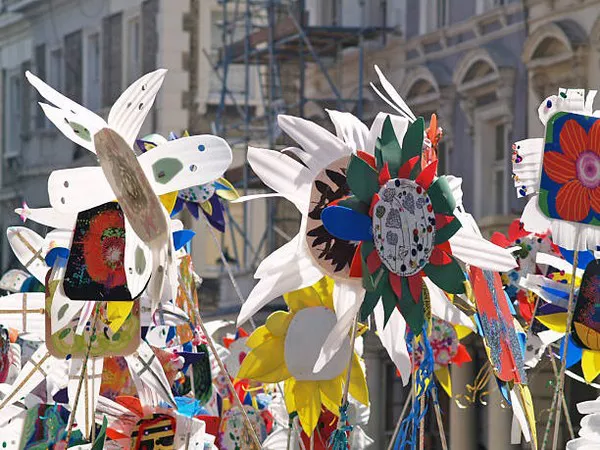The Notting Hill Carnival, a vibrant and iconic celebration, is one of the largest and most famous street festivals in Europe. Held annually in the Notting Hill area of London, this event attracts millions of visitors and celebrates Caribbean culture, music, and heritage. Its roots, cultural significance, and evolution offer a fascinating story that spans decades. This article delves into the history of the Notting Hill Carnival, exploring how long Notting Hill Carnival has been going, its development, and its impact on London’s cultural landscape.
Origins of the Notting Hill Carnival
1. Early Beginnings and Influences
The origins of the Notting Hill Carnival can be traced back to the early 1960s, but its roots are deeply connected to Caribbean traditions and the broader history of carnival celebrations. Carnival, as a concept, has been celebrated in various forms around the world for centuries. The Caribbean carnivals, in particular, were influenced by African, European, and indigenous cultures, blending music, dance, and vibrant costumes in celebration of freedom and cultural heritage.
2. The Role of Caribbean Immigrants
The Notting Hill Carnival emerged from the Caribbean community in London, particularly the Trinidadian and Jamaican immigrants who brought their cultural traditions with them. In the post-war period, this community faced significant social and economic challenges, including racial tensions and discrimination. The carnival became a means for these immigrants to assert their cultural identity and celebrate their heritage.
The Inauguration of the Notting Hill Carnival
1. First Celebrations in 1966
The first official Notting Hill Carnival took place in 1966, organized by Claudia Jones, a Trinidadian-born activist and journalist. Jones, known for her work in promoting Caribbean culture and addressing social issues, played a pivotal role in bringing the carnival concept to London. The initial event was held in response to the racial tensions and civil unrest experienced by the Caribbean community in Notting Hill. It aimed to provide a positive outlet for cultural expression and community solidarity.
2. Early Challenges and Growth
The early years of the carnival were marked by challenges, including limited resources and logistical issues. Despite these obstacles, the event quickly gained popularity and grew in size. The carnival began as a small, local celebration but soon attracted larger crowds, both from within the Caribbean community and from outside.
Evolution of the Notting Hill Carnival
1. Expansion and Development
Throughout the 1970s and 1980s, the Notting Hill Carnival continued to expand, becoming a significant cultural event in London. The festival’s growth was characterized by an increase in the number of participants, diverse musical performances, and elaborate costumes. The carnival became known for its vibrant parades, steel bands, and calypso music, reflecting the rich cultural heritage of the Caribbean.
2. Challenges and Resilience
The carnival faced various challenges over the years, including issues related to public safety, funding, and logistical concerns. Despite these difficulties, the event remained resilient and continued to thrive. The organizers worked tirelessly to address these challenges, implementing measures to improve safety and enhance the overall experience for attendees.
Cultural Impact and Significance
1. Celebrating Diversity and Heritage
The Notting Hill Carnival serves as a powerful celebration of Caribbean culture and heritage. It showcases the diversity and richness of the Caribbean community in London, providing a platform for cultural expression and artistic creativity. The carnival features a wide range of music genres, including soca, reggae, and dub, as well as traditional Caribbean dishes and craft stalls.
2. Promoting Unity and Community Spirit
The carnival plays a crucial role in fostering unity and community spirit among London’s diverse population. It brings together people from different backgrounds and ethnicities, promoting mutual understanding and respect. The event also serves as a platform for social and political commentary, addressing issues such as racial inequality and social justice.
The Notting Hill Carnival Today
1. Modern Celebrations and Innovations
In recent years, the Notting Hill Carnival has continued to evolve, incorporating modern innovations while preserving its traditional roots. The festival now features a range of activities, including live music performances, dance workshops, and family-friendly events. The use of social media and digital platforms has also played a significant role in promoting the carnival and engaging with a global audience.
2. Impact on Local Economy and Tourism
The Notting Hill Carnival has a substantial impact on the local economy and tourism industry. It attracts millions of visitors each year, contributing to the economic vitality of the Notting Hill area and surrounding neighborhoods. The event generates significant revenue for local businesses, including restaurants, shops, and accommodation providers.
Reflections on the Legacy of the Notting Hill Carnival
1. Historical Significance
The Notting Hill Carnival’s history is a testament to the resilience and creativity of the Caribbean community in London. It reflects the challenges and triumphs of the immigrant experience and highlights the importance of cultural preservation and celebration. The carnival’s journey from a modest local event to an internationally renowned festival is a source of pride for the Caribbean community and a symbol of cultural diversity in London.
2. Future Prospects
As the Notting Hill Carnival continues to grow and evolve, its future prospects remain bright. The event’s ability to adapt to changing times while staying true to its roots ensures its continued relevance and significance. The carnival’s commitment to celebrating diversity, promoting unity, and fostering cultural exchange will undoubtedly contribute to its ongoing success.
See also: What Does St Patrick’s Day Celebrate?
Conclusion
The Notting Hill Carnival has been a cornerstone of London’s cultural landscape for over half a century. From its humble beginnings in 1966 to its status as one of Europe’s largest and most famous street festivals, the carnival’s history is a rich tapestry of cultural expression, community solidarity, and resilience. As it continues to celebrate Caribbean heritage and bring people together, the Notting Hill Carnival remains a powerful symbol of cultural diversity and unity in London.

